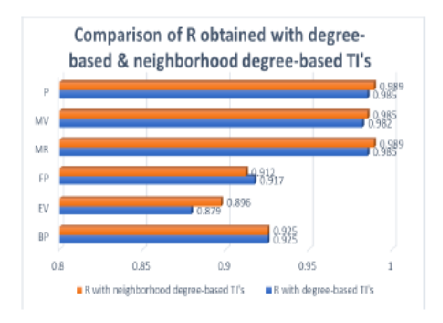


Indian Journal of Science and Technology
Year: 2023, Volume: 16, Issue: 26, Pages: 1986-1996
Original Article
Aditya Pegu1*, Sumanta Borah1, Ankur Bharali2
1Research Scholar, Mathematics, Dibrugarh University, India
2Professor, Mathematics, Dibrugarh University, India
*Corresponding Author
*Email: [email protected]
Received Date:20 March 2023, Accepted Date:15 June 2023, Published Date:08 July 2023
Objectives: To study some newly introduced neighborhood degree-based topological indices (TIs) for chemical structures of antituberculosis drugs as predictors of various physicochemical properties of antituberculosis drugs. Methods: We compute neighborhood TIs of the 15 antituberculosis drugs from their chemical structures. Further we apply Quantitative Structure Property Relationship (QSPR) approach to correlate the physicochemical properties such as boiling point, flash point, enthalpy, molar refractivity, polarizability and molar volume of the drugs with the values of the TIs obtained from the structures. Findings: The TIs are found to have very good correlation with the properties of the drugs. Although all the considered TIs can be used to predict the physicochemical properties of the drugs, but to have better result, we consider three indices based on their correlation with each property of the drugs and established a linear regression equation to obtain the said properties of the drugs. Also, the predicted values are compared with the experimented values and found to have good predictive ability with a very low margin of error with the experimented values. Novelty: We have considered 16 neighborhood degree-based topological indices which are found to have better correlation with the properties of antituberculosis drugs than the degree-based TIs.
Keywords: Neighborhood degree - based topological indices; Antituberculosis drugs; QSPR/QSAR; Degree; Regression
© 2023 Pegu et al. This is an open-access article distributed under the terms of the Creative Commons Attribution License, which permits unrestricted use, distribution, and reproduction in any medium, provided the original author and source are credited. Published By Indian Society for Education and Environment (iSee)
Subscribe now for latest articles and news.